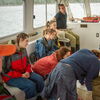
How to better understand the way PR works
Most businesses are not deploying public relations as part of their marketing strategy, and even those that are may not be using these techniques. Even those who understand PR may be familiar with press releases or phrases like “content creation,” but they fail to grasp the wide range of tools and techniques available to PR professionals.

I’ve worked in PR for decades, and the sheer breadth of 21st-century public relations surprises even myself. The press release really is just the tip of the iceberg. When Ivy Ledbetter Lee wrote and distributed the first press release in 1906, it was truly revolutionary. People were familiar with newspapers covering stories, but the art of “creating” news was entirely foreign.
How far we’ve come. When I advise clients today, the press release is generally the starting point, but it often only serves as a launching pad for other techniques that may be even more impactful. One is Google SEO, which embodies the increased importance of online traffic. News outlets are being pitched more than ever before, making it increasingly difficult to stand out.
But there are fun ways to do it. Here are a few examples:
Op-ed columns
From time to time, you won’t be able to land a traditional story on TV or in the newspaper. But don’t give up!
You can write an op-ed column for publication in a local, national, or even international publication. As long as the content is timely and broadly relevant, you can position themselves as a thought leader and opine on a wide range of hot-button issues. A typical op-ed spans 600 words and — assuming you can get it “placed” — that word count provides a long runway for content creation and brand marketing. The Wall Street Journal, Washington Post or even one of Maine’s daily newspapers are immensely popular and their opinion pages are a gold mine for cool content.
Of course, you can’t be too self-promotional — opinion editors can see through PR-y content. But you can still create and market content that features your client, as long as it appeals to readers at the same time.
Public affairs programs
If you’re trying to pitch TV and radio shows, don’t forget about public affairs programs. Networks like C-SPAN do invite guests on to discuss current events, and that could be one of your clients. Even at the state level, it’s worth double-checking your local programming for public affairs programs that engage in guest bookings.
It could be TV or radio. Although it may not be CNN or CNBC, local programs can make waves in local communities.
Local press
Don’t forget local press. Even local weeklies may be hot commodities in certain communities, so it’s worth covering all your bases.
In some cases, local weeklies may even print press releases verbatim, since they’re looking for content and reliant on PR “pitchers” to provide that content for them. For instance, plug your contributions to the local economy or support for nearby nonprofit organizations. It all counts as valuable content.
Online reviews
You don’t need me to tell you that Google search is important. But it’s especially important for PR, since your online reputation has never mattered quite like it does today. There are hundreds of millions of U.S.-based Google users, and many of them rely on Google reviews to make business decisions.
Let’s say that you own a restaurant in Portland, where I live. You will attract more customers if your Google reviews are overwhelmingly positive — 4.0 and above. With two restaurant options, people often choose the one with the higher overall rating. That’s why businesses should encourage their repeat customers to write favorable reviews and spread positive word of mouth online. PR specialists can help by identifying and contacting satisfied customers, who essentially serve as brand ambassadors — for restaurants, cafes, bars, and pretty much all people-facing businesses.









0 Comments